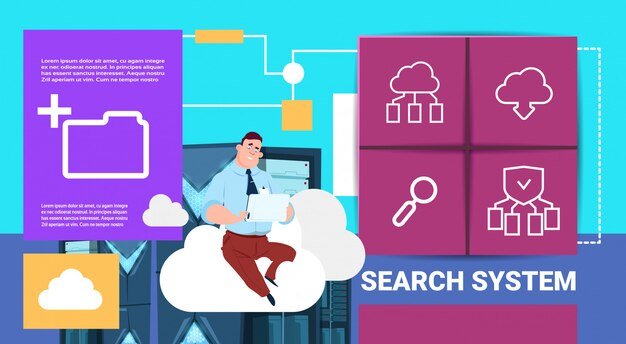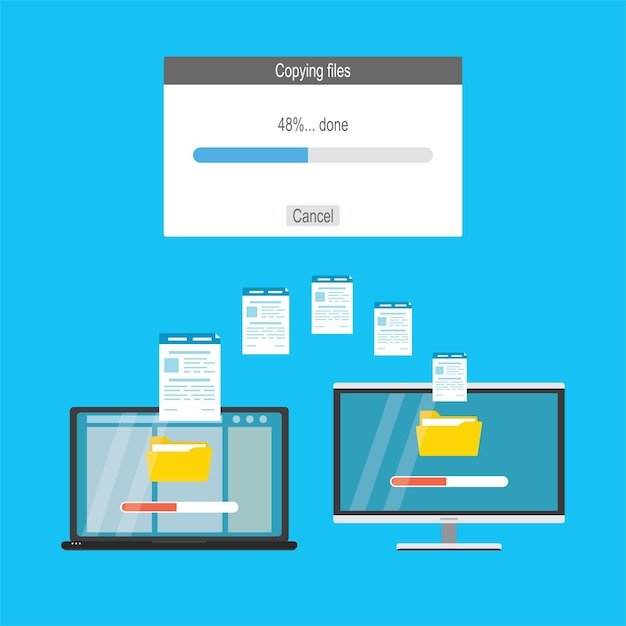Top 3 Data Backup Solutions for US Businesses in 2025

Discover the top 3 data backup solutions for US businesses in 2025, ensuring your critical data is protected from potential threats, and maintaining business continuity and regulatory compliance.
Protecting your business’s critical data is more important than ever. With the increasing frequency of cyberattacks and data breaches, having a robust top 3 data backup solutions for US businesses in 2025 is no longer optional—it’s essential for survival.
Understanding Data Backup and Its Importance
Data backup is the process of creating copies of important data so that these additional copies can be used to restore data after a data loss event. These events can range from simple human error to sophisticated cyberattacks.
Why Data Backup is Crucial for US Businesses
For US businesses, data backup is particularly vital due to a combination of factors, including a high volume of sensitive customer data, strict regulatory compliance requirements, and a sophisticated cyber threat landscape.
- Compliance with Regulations: Many industries in the US are subject to stringent data protection regulations, such as HIPAA for healthcare and GDPR (even though it’s European, it affects US companies doing business in Europe) for businesses handling EU citizens’ data.
- Protection Against Cyber Threats: The US is a major target for cyberattacks, including ransomware, which can encrypt critical business data, making it inaccessible without a decryption key.
- Ensuring Business Continuity: Data loss can lead to significant downtime, impacting productivity, revenue, and customer relationships.
Common Data Loss Scenarios
Several scenarios can lead to data loss, highlighting the need for a comprehensive backup strategy.
- Hardware Failure: Hard drives, SSDs, and other storage devices can fail unexpectedly, leading to data loss if backups are not in place.
- Human Error: Accidental deletion, overwriting files, or incorrect configuration can all result in data loss.
- Cyberattacks: Ransomware, malware, and other types of cyberattacks can compromise data integrity and availability.
In summary, data backup is not merely an IT task, but a core business function that ensures the continuity of operations and protects against a myriad of threats. Proactive data management is key to mitigating risks in an increasingly digital world.
Evaluating Data Backup Solutions: Key Features to Consider
Choosing the right data backup solution involves considering several key features that align with your business’s specific needs and priorities. Here are essential aspects to evaluate when selecting a data backup solution.
Backup Frequency and Automation
The frequency of backups is crucial to minimize data loss. Automated backup solutions ensure that data is backed up regularly without manual intervention.
- Continuous Data Protection (CDP): Provides real-time backups, capturing every change as it occurs.
- Scheduled Backups: Allows you to set specific times for backups, such as daily, weekly, or monthly.
- Incremental Backups: Backs up only the data that has changed since the last backup, saving time and storage space.
Storage Options and Scalability
The storage location and scalability of your backup solution are vital for long-term data protection.
- Cloud Backup: Stores data in secure, offsite data centers, providing accessibility from anywhere and scalability to accommodate growing data volumes.
- Onsite Backup: Keeps data within your physical premises, offering faster recovery times but requiring additional hardware and maintenance.
- Hybrid Backup: Combines onsite and cloud storage, providing the benefits of both while mitigating their respective drawbacks.
Recovery Time Objective (RTO) and Recovery Point Objective (RPO)
RTO and RPO are two critical metrics that determine the effectiveness of your backup solution during recovery scenarios.
- Recovery Time Objective (RTO): The maximum acceptable time within which a system must be restored after an outage.
- Recovery Point Objective (RPO): The maximum acceptable data loss measured in time. It determines the frequency of backups.

Selecting the right data backup solution requires careful evaluation of backup frequency, storageoptions, and recovery metrics. Understanding these key features ensures that your chosen solution aligns with your business’s unique needs and priorities.
Data Backup Solution #1: Acronis Cyber Protect
Acronis Cyber Protect offers a comprehensive approach to data protection by integrating backup, disaster recovery, and cybersecurity capabilities into a single solution. This integration simplifies management and enhances overall protection against various threats.
Key Features of Acronis Cyber Protect
Acronis Cyber Protect is known for its hybrid cloud architecture, AI-powered threat detection, and rapid recovery capabilities.
- Backup and Recovery: Provides full image, file-level, and application-aware backups to protect a wide range of data types.
- Cybersecurity: Includes real-time malware protection, ransomware rollback, and vulnerability assessments.
- Disaster Recovery: Offers cloud-based disaster recovery services to ensure business continuity in the event of a major outage.
Benefits of Using Acronis Cyber Protect
Using Acronis Cyber Protect offers several benefits, including enhanced security, simplified management, and reduced downtime.
Implementing Acronis Cyber Protect allows businesses to leverage advanced technologies for data protection and cybersecurity. Its integrated approach ensures that data is not only backed up but also protected against emerging threats.
Data Backup Solution #2: Veeam Backup & Replication
Veeam Backup & Replication is a leading data backup and recovery solution widely used by businesses of all sizes. It provides comprehensive protection for virtual, physical, and cloud workloads, offering high availability and disaster recovery capabilities.
Key Features of Veeam Backup & Replication
Veeam Backup & Replication is known for its versatility, scalability, and advanced recovery options.
- Backup and Replication: Offers image-level backups, application-aware processing, and near-continuous data protection.
- Instant VM Recovery: Enables quick recovery of virtual machines (VMs) in minutes, minimizing downtime.
- Cloud Integration: Supports backup and recovery to and from major cloud platforms, including AWS, Azure, and Google Cloud.
Benefits of Using Veeam Backup & Replication
Adopting Veeam Backup & Replication results in several benefits, including high availability, rapid recovery, and simplified data management.
Veeam’s capabilities position it as a top choice for businesses seeking robust and flexible data protection. By ensuring high availability and rapid recovery, Veeam helps organizations minimize downtime and maintain business continuity.

Data Backup Solution #3: Druva
Druva offers a cloud-based data protection and management platform that provides backup, disaster recovery, and archiving services. Its cloud-native architecture ensures scalability, security, and ease of management.
Key Features of Druva
Druva is distinguished by its cloud-first approach, centralized management, and data compliance capabilities.
- Cloud Backup: Provides automated and secure cloud backups for endpoints, servers, and cloud applications.
- Data Loss Prevention (DLP): Includes features for data encryption, access controls, and remote wipe to prevent data loss.
- eDiscovery and Compliance: Supports data retention policies, legal holds, and compliance reporting for regulatory requirements.
Benefits of Using Druva
Choosing Druva for data protection offers numerous benefits, including simplified management, reduced costs, and enhanced compliance.
Ultimately, integrating Druva into an organization’s IT strategy ensures comprehensive data protection, simplified management, and enhanced compliance, making it a smart choice for businesses embracing cloud technologies.
| Key Point | Brief Description |
|---|---|
| 🛡️ Data Backup | Copying data to restore after loss events. |
| ☁️ Cloud Backup | Storing data offsite for accessibility and scalability. |
| ⏱️ Recovery Time | Minimizing downtime with quick data recovery. |
| 🤖 Automation | Automated backups ensure regular data protection. |
FAQ
▼
Data backup is crucial for US businesses to protect against data loss from cyberattacks, hardware failures, and human errors, ensuring business continuity and regulatory compliance. It also helps maintain customer trust.
▼
The frequency depends on the business’s RPO, but daily backups are generally recommended. Continuous Data Protection (CDP) offers real-time backups. Regular backups minimize potential data loss.
▼
Cloud-based solutions offer scalability, accessibility, and reduced infrastructure costs. They ensure data is stored offsite, protecting against localized disasters. They also often include automated backup features.
▼
RTO (Recovery Time Objective) is the maximum acceptable time to restore a system after an outage. RPO (Recovery Point Objective) is the maximum acceptable data loss measured in time. Both help define backup strategies.
▼
Assess your business’s specific needs, considering factors like data volume, RTO/RPO, compliance requirements, and budget. Evaluate features such as automation, storage options, and security capabilities to make an informed choice.
Conclusion
Choosing the right data backup solution is a critical decision for US businesses in 2025. By considering the key features and benefits of Acronis Cyber Protect, Veeam Backup & Replication, and Druva, businesses can ensure their data is protected, and operations can continue smoothly even in the face of unforeseen events.





